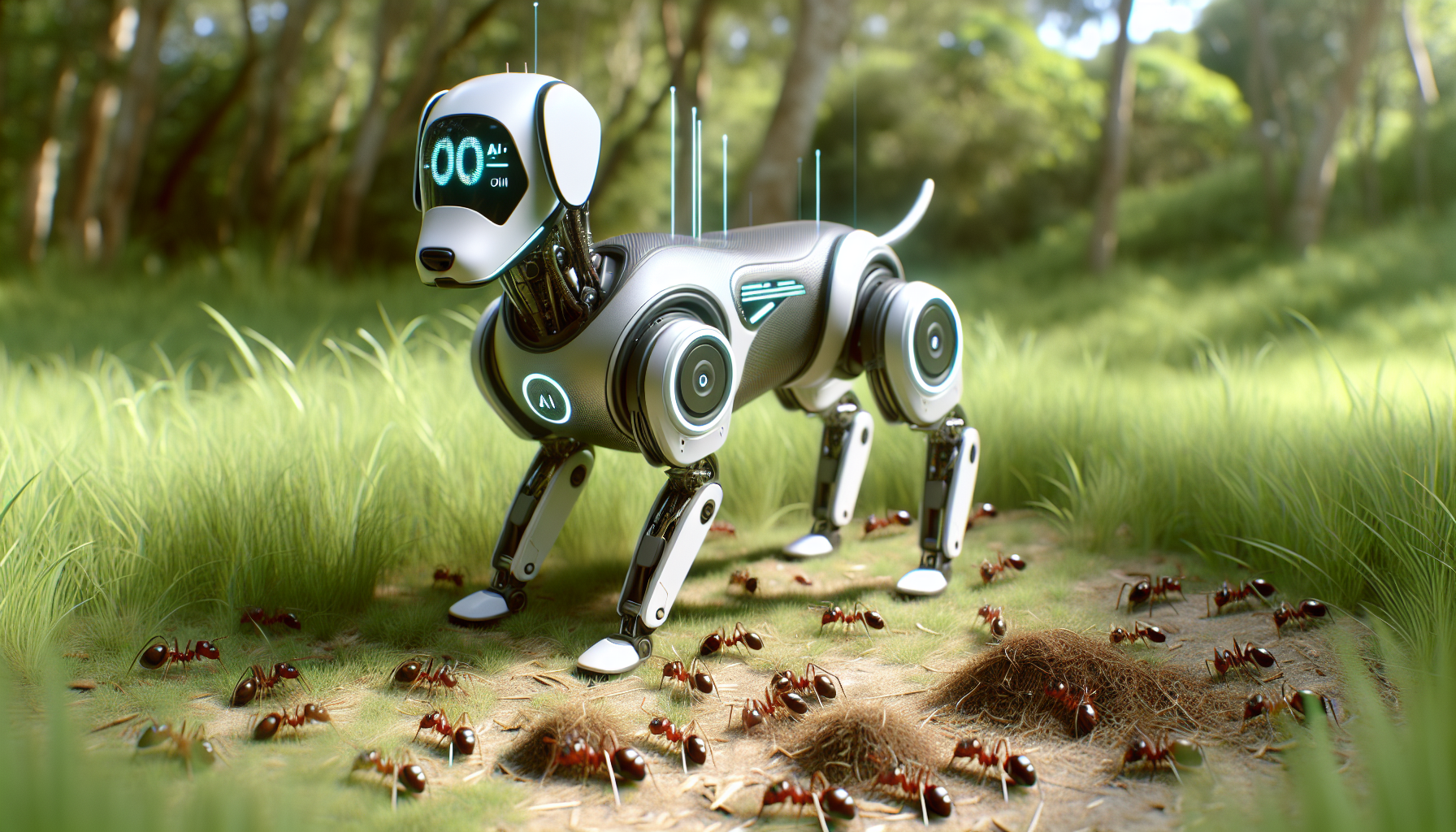- Empty cart.
- Continue Shopping
AI Robot Dog Revolutionizes Fire Ant Detection Technology – AI-powered dog robot

AI-powered dog robot –
AI Robot Dog Revolutionizes Fire Ant Detection Technology
Introduction to AI-Powered Dog Robot Technology
The dawn of robotics in pest management marks a significant stride forward in the fight against invasive species. The AI-powered dog robot is at the forefront of this breakthrough. Acting as a new-age sentinel, this robotic marvel targets and detects invasive fire ants with unmatched precision.
Fire ants are a formidable nuisance, threatening ecosystems across the globe. Traditional methods of detection and removal, often labor-intensive and time-consuming, are now enhanced by this groundbreaking technology. But what exactly is an AI-powered dog robot, and how does it streamline the fight against this invasive species?
Why Fire Ants Pose a Serious Threat
Fire ants are not just a mere inconvenience. They are invasive and aggressive pests known for their painful stings, which can cause severe allergic reactions in some individuals. Their presence threatens:
- Local wildlife by preying on birds and small mammals
- Agricultural crops, leading to significant economic loss
- Native ant communities, disrupting ecological balance
As their colonies expand, fire ants drastically alter the habitats they invade, leading to extensive biodiversity loss. Detecting these pests quickly and efficiently is crucial for ecological conservation and economic stability.
The Role of AI in Enhancing Detection Efficiency
How AI-Powered Dog Robots Work
The AI-powered dog robot utilizes a sophisticated combination of sensors, cameras, and algorithms to detect fire ants. Its artificial intelligence is designed to accurately pinpoint the presence of these ants even in the most concealed locations. Key features include:
- Advanced Sensory Detection: Equipped with sensors that can detect chemical signals unique to fire ants.
- Real-Time Analysis: Processes data on the spot to provide instant feedback.
- Autonomous Navigation: Capable of traversing complex terrains without human intervention.
This innovative approach not only boosts detection rates but also reduces the reliance on traditional methods that are less efficient and more disruptive to the environment.
Implications on Environmental Conservation
The integration of the AI-powered dog robot into pest control strategies carries profound implications for environmental conservation. By minimizing the need for chemical pesticides, this robot helps in:
- Reducing Chemical Usage: Less reliance on harmful pesticides leads to healthier ecosystems.
- Protecting Non-Target Species: Precise targeting ensures only fire ants are affected.
- Maintaining Biodiversity: Preserves the delicate balance of local ecosystems.
With the accurate detection capabilities endowed by AI, swift action can be taken to eradicate invasions without lasting environmental damage.
Economic Impact of AI-Powered Dog Robots
In addition to ecological benefits, the AI-powered dog robot offers considerable economic advantages. For industries that suffer from fire ant infestations, such as agriculture and tourism, this technology can result in:
- Increased Crop Yields: Protects valuable agricultural resources from damage.
- Reduced Pest Control Costs: Cuts down on the financial burden of traditional pest management.
- Boosted Property Values: Communities benefit from improved pest management and safer environments.
These robots help save costs while fostering economic resilience in affected regions, providing a high return on investment for businesses and municipalities alike.
Challenges and Future Prospects
Overcoming Technical and Financial Barriers
While the benefits of AI-powered dog robots are impressive, there are challenges to address. Technical issues such as battery life, software reliability, and navigation in diverse environments are areas of ongoing development. Additionally, the initial cost of deploying these robots may lead to accessibility barriers for smaller entities.
The Future of Robotic Pest Management
Despite current challenges, the future is bright for AI-powered dog robots. Continuous advancements in AI and robotics are expected to enhance their capabilities, making them even more cost-effective and efficient. Prospective developments include:
- Improved AI Algorithms: Enhanced learning capabilities for better adaptation to various environments.
- Cost Reductions: Economies of scale and technological improvements are likely to decrease costs.
- Integration with Other Technologies: Potential for collaboration with drones and other robotic systems for comprehensive pest management solutions.
Ultimately, the evolution of these robots will continue to revolutionize how we address the challenges posed by invasive species and other environmental threats.
Irresistible Deals on Pet Accessories You Can’t Miss on Amazon!
Watch funny and cute dog videos!
Disclaimer: This article was generated with the assistance of AI technology. All images featured on this website are either sourced from free-to-use platforms, created by us, generated with the assistance of AI technology or used with permission. If you believe an image on this site violates copyright or your rights, please contact us, and we will address the issue promptly.

















